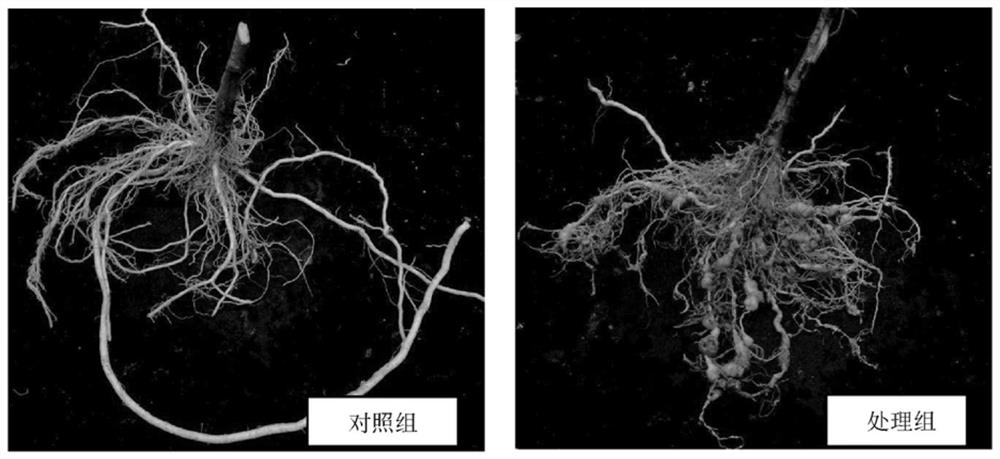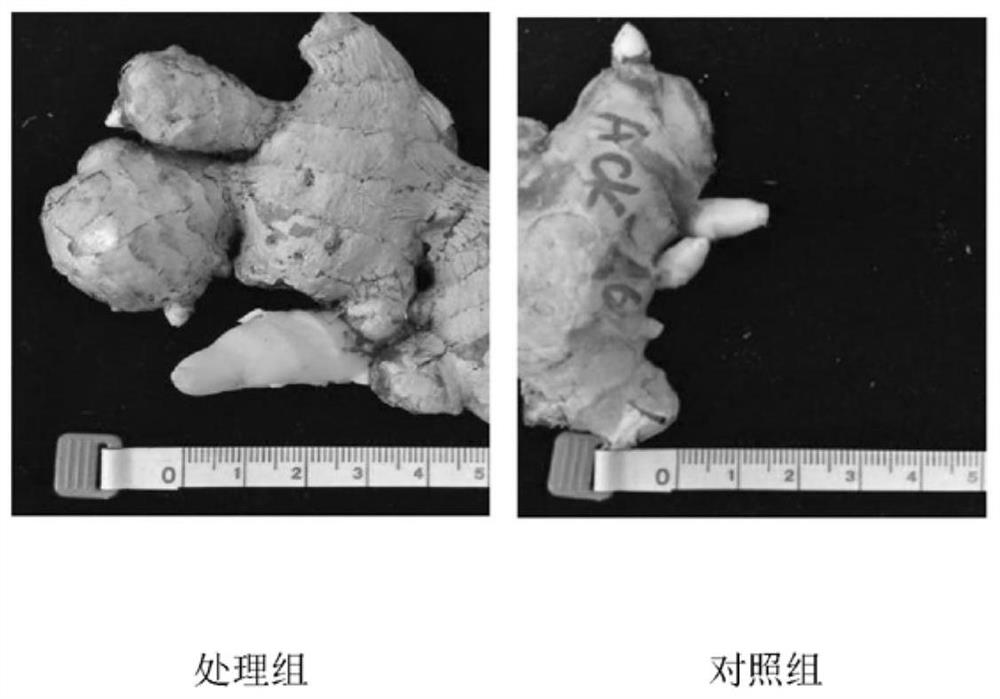Purpureocillium lilacinum capable of preventing and treating Meloidogyne and application thereof
A technology of violacea lilac, strains, applied to lilac and its application in agricultural production, can solve the problem of single action object, lack of efficient strains, physiological characteristics and functional characteristics of lilac strains differences, etc.
- Summary
- Abstract
- Description
- Claims
- Application Information
AI Technical Summary
Problems solved by technology
Method used
Image
Examples
Embodiment 1
[0021] Embodiment 1: Separation of P. lilacinus MN12228
[0022] P. lilacinus MN12228 was isolated from wheat field soil in Xi'an, Shaanxi Province, and was preserved in the General Microorganism Center (CGMCC) of China Committee for Microbial Culture Collection (CGMCC) on July 12, 2016. The address is Beichen West Road 1, Chaoyang District, Beijing. No. 3 Beijing Institute of Microbiology, the preservation number is CGMCC 12773. The specific separation method is as follows: 10 g of soil sample was weighed, added to 90 mL of sterilized water containing 0.1% Tween, and incubated in a shake flask at 28° C. for 1 hr. The culture solution was diluted step by step with water containing 0.1% Tween into different gradients, and then spread on the PDA solid medium (200 grams of potatoes, 20 grams of glucose, 15-20 grams of agar, 1000 ml of distilled water), at 28 ° C In a constant temperature incubator for 4 days, pick a single colony after 4 days, continue to inoculate it on the PDA...
Embodiment 2
[0027] Embodiment 2: the spore-producing ability of P. lilacinus, the determination of the number of viable bacteria
[0028] Determination of sporulation ability in laboratory:
[0029] Inoculate activated P. lilacinum MN12228 in PDA medium, place it in an incubator at 25-28°C for 7 days, wash out the spores on the medium with sterile water, make a spore suspension, and use a hemocytometer The counting plate was counted, and the spore concentration was determined to be 9.7×10 9 Spores / mL, higher than the sporulation ability (5.9 × 10 8 spores / dish, 20mL / dish).
[0030] Determination of sporulation production of cultures in pilot plant:
[0031] Mix wheat bran, ammonium sulfate and sucrose into a solid preparation according to the weight ratio of 85:10:5, put it into a solid fermenter, then add 20% pure water (by total weight) and mix evenly, at a high temperature of 121°C and under high pressure conditions Sterilize for 20 minutes. After cooling, inoculate activated P. l...
Embodiment 3
[0035] Embodiment 3: the preparation of P. lilacinum MN12228 inoculum
[0036] The P. lilacinus inoculum consists of the following components by weight: 8-12 parts of culture of P. lilacinum MN12228, 5-9 parts of dispersant NNO, 2-6 parts of SDS, and 3-5 parts of pull-open powder , Potassium dihydrogen phosphate 6-10 parts, make up to 100 parts with carrier diatomaceous earth. The spore content in the prepared P. lilacinus inoculum is not less than 10 8 A / g, preferably 10 9 pcs / g.
[0037] Table 1: The content of each component of the bacterial agent
[0038] serial number MN12228 NNO SDS pull open powder Potassium dihydrogen phosphate diatomite Group I 8 5 2 3 6 76 Group II 10 7 4 4 8 67 Group III 12 9 6 5 10 58
PUM
 Login to View More
Login to View More Abstract
Description
Claims
Application Information
 Login to View More
Login to View More - R&D
- Intellectual Property
- Life Sciences
- Materials
- Tech Scout
- Unparalleled Data Quality
- Higher Quality Content
- 60% Fewer Hallucinations
Browse by: Latest US Patents, China's latest patents, Technical Efficacy Thesaurus, Application Domain, Technology Topic, Popular Technical Reports.
© 2025 PatSnap. All rights reserved.Legal|Privacy policy|Modern Slavery Act Transparency Statement|Sitemap|About US| Contact US: help@patsnap.com



